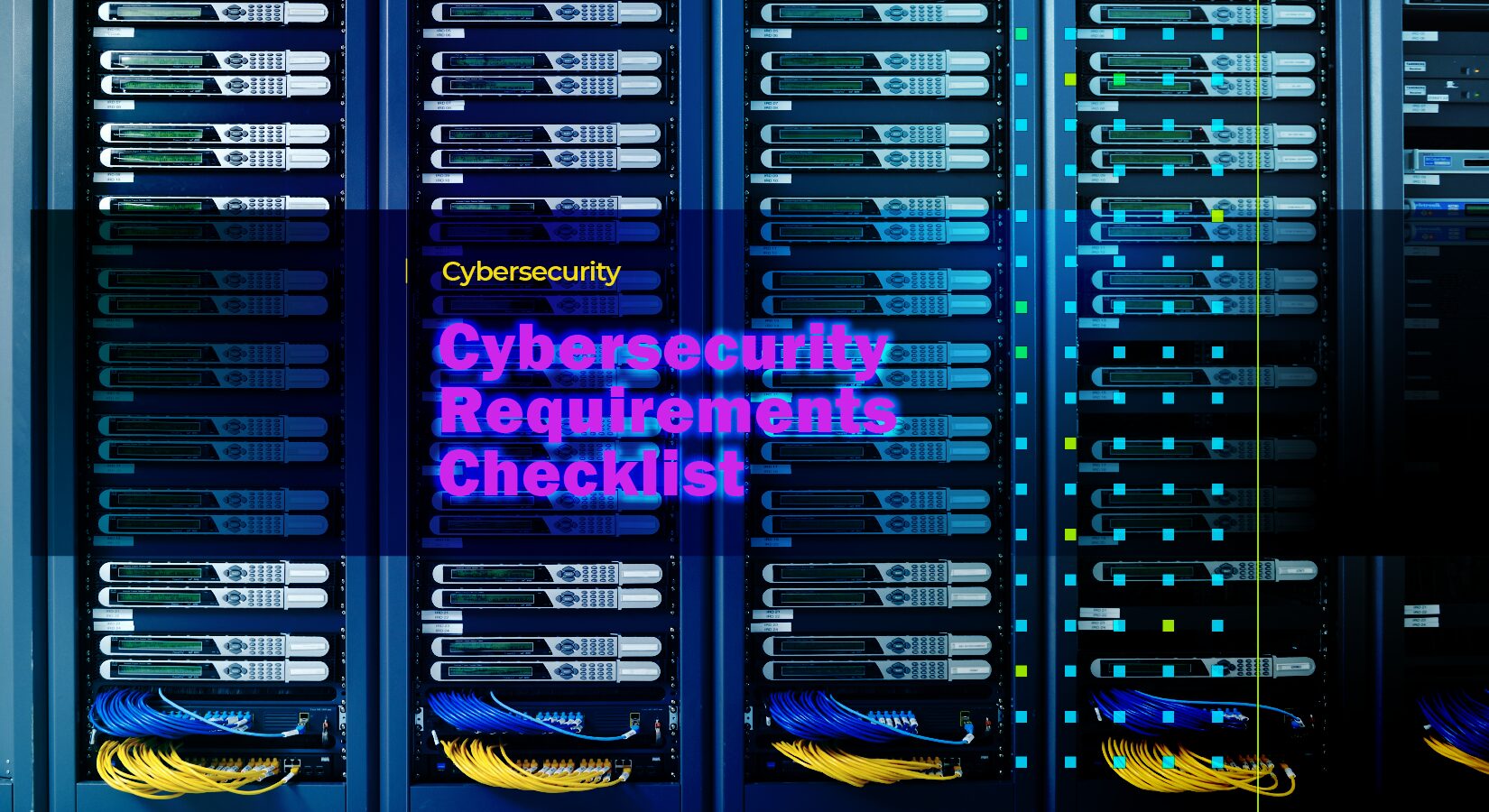
A Tale of Unsecure Networks: The Dangers of Not Following a Cybersecurity Requirements Checklist
|
Tune in and get Inspired 🎧
Getting your Trinity Audio player ready...
|
As business owners or corporate stewards of customer information, we must ensure proper cybersecurity measures are in place to protect our customers and businesses from potential threats. Threat actors are becoming more sophisticated daily and can quickly gain access to our networks if we’re not careful. This blog post will discuss the importance of utilizing a cybersecurity requirements checklist to protect your business. We’ll also highlight some dangers of not following a cybersecurity protocol.
Estimated reading time: 7 minutes
Table of contents
- Threat actors are becoming more sophisticated, and they can quickly gain access to your networks if we’re not careful.
- A cybersecurity requirements checklist is essential to protect your business from these threats.
- Some dangers of not following a cybersecurity protocol include legal, regulatory, and compliance requirements.
- If application operation risks exposing highly sensitive information, special security controls must be implemented.
- Data processing, storage, or transmission through public or untrusted networks must be done with physical control measures.
Threat actors are becoming more sophisticated, and they can quickly gain access to your networks if we’re not careful.
Threat actors are becoming increasingly sophisticated and can quickly gain access to networks if appropriate measures are not taken. To protect against these threats, it is vital to understand how they operate and what tools and techniques they use.
One common tactic used by threat actors is known as phishing. This involves sending emails that appear to be from a legitimate source, such as a financial institution or government agency, to trick the recipient into clicking on a malicious link or attachment. Once the link or attachment is opened, the threat actor can access the victim’s system and data.
Another tactic that is often used is known as social engineering. This involves attempting to trick people into divulging sensitive information, such as login credentials or financial information. Threat actors often pose as someone else, such as a customer service representative, to gain their victim’s trust. Once they have the information they need, they can access systems and data.
To protect against these threats, it is essential to be aware of them and take steps to prevent them. One way to do this is to educate employees about phishing and social engineering tactics so that they can be on the lookout for suspicious emails and requests for information. Additionally, implementing security measures such as two-factor authentication can help make it more difficult for threat actors to access systems and data.
A cybersecurity requirements checklist is essential to protect your business from these threats.
As the world becomes increasingly digitized, businesses must take steps to protect themselves from online threats. One way to do this is to utilize a cybersecurity requirements checklist. This checklist can help businesses identify potential risks and take steps to mitigate them.
Some of the items on a typical cybersecurity requirements checklist include the following:
– Identifying sensitive data and assets: Businesses should identify what data and assets are most critical to their operations and take steps to protect them. This may include encrypting data or using access control measures.
– Developing a security policy: A security policy can help businesses establish procedures for handling sensitive data and responding to security incidents. The policy should be tailored to the specific needs of the business.
– Implementing security controls can help businesses protect their data and assets from unauthorized access or modification. Standard controls include firewalls, intrusion detection systems, and access control measures.
– Training employees: Employees should be trained to identify potential security risks and report them to management. They should also know what procedures to follow in a security incident.
By taking these steps, businesses can make it more difficult for cybercriminals to access their data or disrupt their operations. A cybersecurity requirements checklist can help businesses identify the measures they need to take to protect themselves from online threats.
Some dangers of not following a cybersecurity protocol include legal, regulatory, and compliance requirements.
Some dangers of not following a cybersecurity protocol include legal, regulatory, and compliance requirements. Penalties for violating these requirements can be severe and may result in legal action against the responsible party. In some cases, failure to comply with cybersecurity protocols can also lead to data loss or exposure to confidential information. This can damage an organization’s reputation and may even result in financial losses.
If application operation risks exposing highly sensitive information, special security controls must be implemented.
If application operation risks exposing highly sensitive information, unique security controls must be implemented. These controls may include encryption, password protection, and physical security measures.
Encryption is a process of transforming readable data into an unreadable format. This makes it difficult for unauthorized individuals to access the information. Password protection requires individuals to enter a password to view the data. Physical security measures may include storing the data on a secure server that is not accessible from the Internet.
Unique security controls are essential to protect highly sensitive information. Encryption, password protection, and physical security measures can all help to keep data safe from unauthorized access.
Data processing, storage, or transmission through public or untrusted networks must be done with physical control measures.
When it comes to data processing, storage, or transmission that takes place through public or untrusted networks, physical control measures must be in place to ensure the safety and security of that data. Without these measures in place, it would be far too easy for hackers or other malicious individuals to gain access to this sensitive information and misuse it for their nefarious purposes.
Some physical control measures should be implemented in these situations, including firewalls and intrusion detection systems. These systems can help prevent unauthorized access to the network and alert administrators if someone is trying to break in. Additionally, all data should be encrypted before it is sent over the network so that even if it is intercepted, it would be much more difficult for someone to decipher.

Ultimately, the goal is to ensure that any data being processed, stored, or transmitted over public or untrusted networks is as secure as possible. By taking the necessary precautions and implementing physical control measures, we can help to protect this data from falling into the wrong hands and keep it out of harm’s way.
If you don’t have a protocol in place for cybersecurity, your business is at risk. Cybersecurity threats are becoming increasingly sophisticated, and if you’re not careful, they can quickly gain access to your networks. This is why it’s essential to utilize a cybersecurity requirements checklist to protect your business from these threats.
Some dangers of not following a cybersecurity protocol include legal, regulatory, and compliance requirements. If application operation risks exposing highly sensitive information, unique security controls must be implemented. Data processing, storage, or transmission through public or untrusted networks must be done with physical control measures.
Don’t let your business become a victim of a cyber attack – make sure you have a solid protocol to protect yourself.

